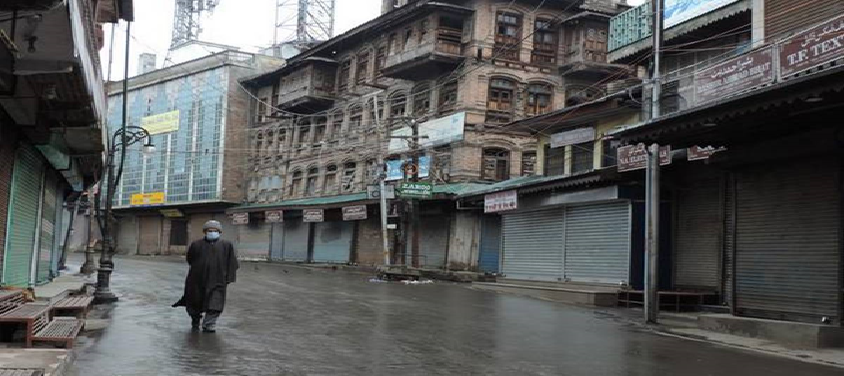Panel Redraws All Five J&K LS Seats
07, Feb 2022

Prelims level : Election & Electoral Returns
Mains level : GS-II Salient features of the Representation of People’s Act
Why in News?
- The J&K Delimitation Commission has changed the complexion of most of the 90 Assembly seats, while reconfiguring and renaming 28 new Assembly constituencies and deleting 19 Assembly Segments in its Interim Report.
About the News:
- The interim report, shared with the associate members two days ago, suggested that the Kashmir division will get an additional seat in Kupwara, while the Jammu division will have one additional seat in Kathua district, one in Samba, one in Doda, one in Rajouri, one in Udhampur and one in Kishtwar.
- Of the six seats, three Assembly segments are from the Muslim-majority Chenab Valley and Pir Panjal valleys, while four are in the Hindu Jammu-Samba-Kathua belt.
- Seventeen constituencies have been redrawn in the Jammu province while 11 have been reconfigured in the Kashmir division. Similarly, nine names of Assembly constituencies in the Jammu division have vanished due to the reconfiguration and 10 names disappear from the Kashmir division.
- The Shri Mata Vaishno Devi constituency has been identified as the smallest of all with just 73,648 votes in the Jammu region.
- The Commission has also proposed reframing of Lok Sabha constituencies, with J&K earlier having five which included three seats from Kashmir and two from Jammu. It has suggested to distribute 18 Assembly segments among the five Lok Sabha constituencies.
- The newly carved Lok Sabha seat will havesix of the nine Assembly segments reserved for the STs.
- The Srinagar Lok Sabha seat will now comprise Assembly segments spread over five districts of Srinagar, Budgam, Pulwama, Ganderbal and Shopian against the earlier three.
- North Kashmir’s Baramulla Lok Sabha seat will be spread over four districts, which includes parts of Budgam, Baramulla, Kupwara and Bandipora.
- The seats reserved for the Schedule Tribes included Darhal, Thannamandi in Rajouri district; Surankote, Mendhar and Poonch Haveli in Poonch district; and Mahore in Reasi district in the Jammu province’s Pir Panjal Valley.
- Larnoo in Anantnag, Kangan in Ganderbal, and Gurez are ST seats in the Kashmir province. The Commission has reserved nine seats for the STs and seven for the SCs.
What is Delimitation?
- Delimitation literally means the process of fixing limits or boundaries of territorial constituencies in a state that has a legislative body.
- Bifurcation of J&K into two UTs has led to redrawing of Assembly constituency boundaries. While, the UT of Ladakh will not have its own legislature, J&K will. This would be similar to Puducherry or Delhi.
- Such delimitation was also necessitated in 2014 when Andhra Pradesh and Telangana were bifurcated.
- According to the Delimitation Commission Act, 2002, the Delimitation Commission appointed by the Centre has to have three members: a serving or retired judge of the Supreme Court as the chairperson, and the Chief Election Commissioner or Election Commissioner nominated by the CEC and the State Election Commissioner as ex-officio members.
How Delimitation Process is done?
- Under Article 82, the Parliament enacts a Delimitation Act after every Census.
- Under Article 170, States also get divided into territorial constituencies as per Delimitation Act after every Census.
- Once the Act is in force, the Union government sets up a Delimitation Commission.
- The new state assembly shall have 114 seats (currently 107), out of which only 90 will be open for elections, and the remaining 24 will be shadow seats reserved for the areas of the erstwhile state that have been occupied by Pakistan (PoJK).
- For the delimitation exercise, the population figures of 2011 census shall be taken as the basis.
- The J&K Representation of the People Act 1957 has now been invalidated and, instead, delimitation will be done as per the Representation of the People Act, 1950 (as amended from time to time) and provisions of Sections 59, 60 of Act 34 of 2019.
Who carry out the Exercise?
- Delimitation is undertaken by a highly powerful commission. They are formally known as Delimitation Commission or Boundary Commission.
- These bodies are so powerful that its orders have the force of law and they cannot be challenged before any court.
- Such commissions have been constituted at least four times in India — in 1952 under the Delimitation Commission Act, 1952; in 1963 under Delimitation Commission Act, 1962; in 1973 under Delimitation Act, 1972 and last in 2002 under Delimitation Act, 2002.
- The commissions’ orders are enforced as per the date specified by the President of India. Copies of these orders are laid before the Lok Sabha or the concerned Legislative Assembly. No Modifications are Permitted.
Why Delimitation is Needed?
- To provide equal representation to equal segments of a population.
- Fair division of geographical areas so that one political party doesn’t have an advantage over others in an election.
- To follow the principle of “One Vote One Value”.
What are the Problems with Delimitation?
- States that take little interest in population control could end up with a greater number of seats in Parliament. The southern states that promoted family planning faced the possibility of having their seats reduced.
- In 2008, Delimitation was done based on the 2001 census, but the total number of seats in the Assemblies and Parliament decided as per the 1971 Census that was not changed.
- The constitution has also capped the number of Lok Shaba & Rajya Sabha seats to a maximum of 550 & 250 respectively and increasing populations are being represented by a single Representative.






